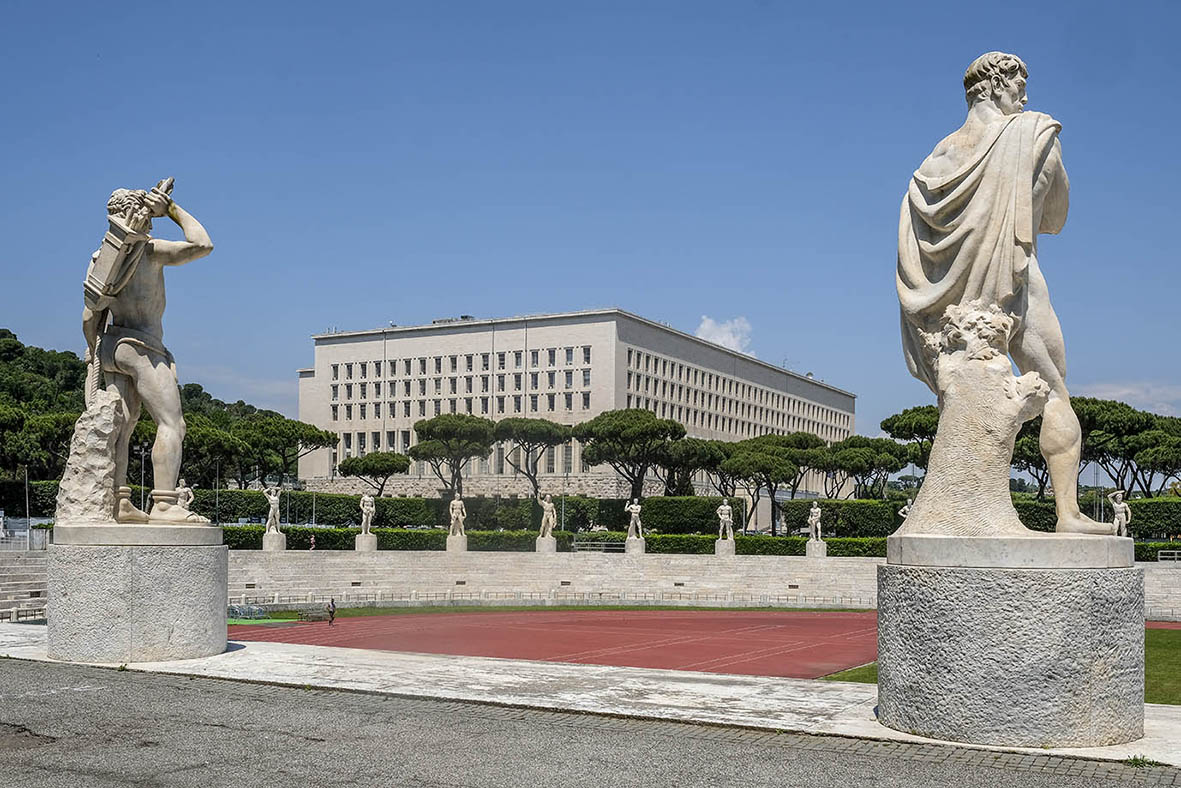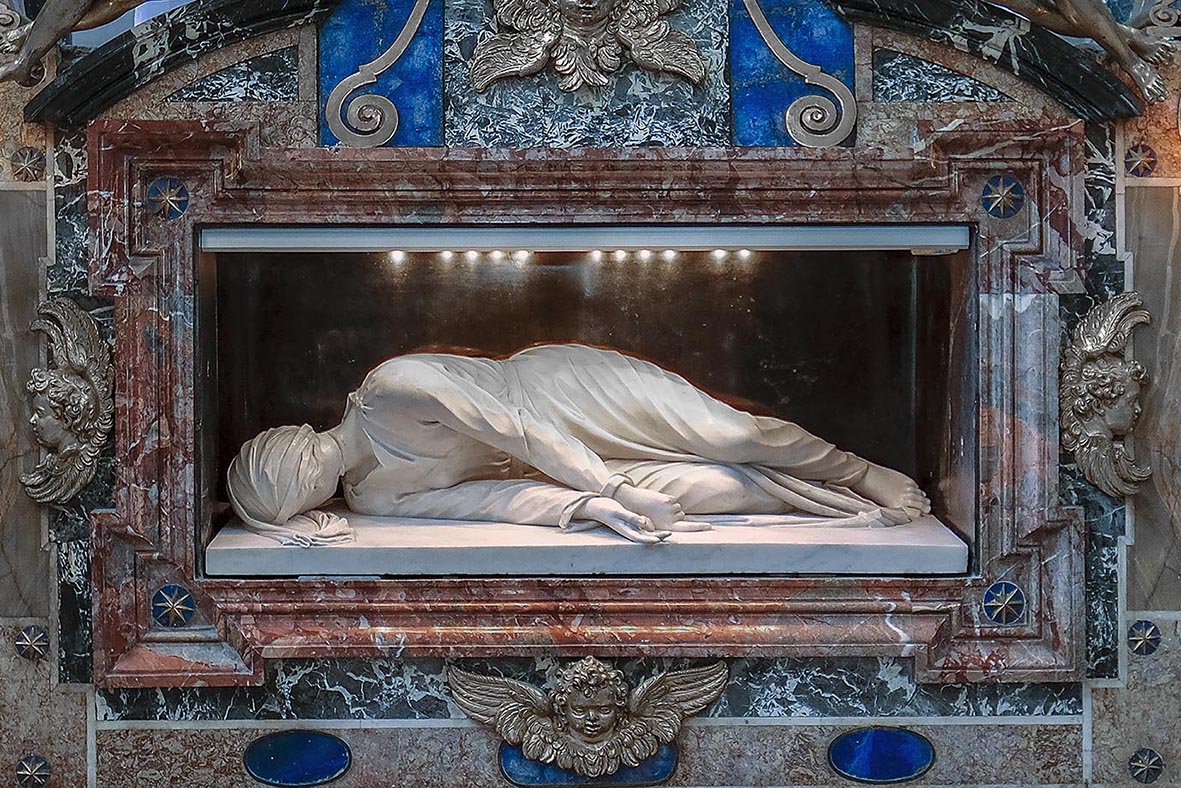May 29, 2019
The Via Appia is the famous approach road to Rome in the South. In the same time the Via Nomentura, now a busy traffic road, was the approach road from the North-East. Here are also catacombs located. They are visited by few people.
Outside the Aurelian wall of the old town is the basilica of the martyr Saint Agnes, built in the 7th century. Agnes was abused as a thirteen-year-old and dedicated to pagan gods, but en route to the Temple of Minerva she made a sign of the cross and refused to turn against God. She was tortured and her neck was pierced by a sword.
Agnes was initially buried in the catacombs. Catacombs are still located here over a distance of 6 km., about 14 meters below ground. Her remains were later placed in a silver coffin and this basilica was built where she was tortured and buried. The coffin is visible from the church. I visited the catacombs with six people. Photography was not allowed. In some places there were almost 2000-year-old remains.
Behind the basilica of Agnes there is another special building: the mausoleum of Santa Constanza, built in the 4th century by Emperor Constantine for his daughters Constantina and Helena. The mausoleum was built on this place, because Constantina worshiped Agnes. After her father she also converted to Christianity. Few people visit this place. The Mausoleum was unlit.
Interestingly, in the 17th century many Dutch artists lived in Rome, especially in the streets in my neighborhood. The Frisian sculptor Pier Pander lived and worked in a large studio not far from the Basilica of Agnes and the Mausoleum. These Dutch people formed a group called ‘Bentvueghels’. They were poorly known for their drinking layers and ‘barbaric’ behavior. As a group they regularly visited the Mausoleum, which they regarded as a sort of temple of Bacchus, because the round building is decorated with depictions of angels working on the vintage. They left graffiti in two of the dark niches: names and dates.









